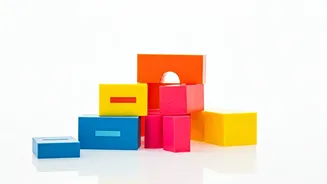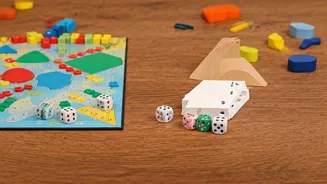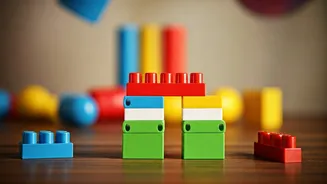Make Math Playful
One of the most effective ways to captivate a child's interest in mathematics is by integrating it into games and fun activities. Transform learning into an enjoyable
experience by incorporating math concepts into everyday play. For instance, card games like 'War' can subtly teach number comparison and ordering. Board games such as 'Monopoly' or 'Clue' incorporate arithmetic skills such as addition, subtraction, multiplication, and logical reasoning, making the practice of these skills a fun engagement. Similarly, cooking and baking offer great opportunities to learn about measurement, fractions, and proportions. By making math playful, children see it as an engaging challenge rather than a daunting subject, making it more appealing to them.
Connect to Real Life
To foster a deeper understanding and appreciation of mathematics, it is important to link it to real-life situations. The relevance of mathematical concepts becomes clear when applied to everyday scenarios. Start by pointing out math in the world around them, from calculating the cost of groceries during shopping to estimating the time needed for a journey. Encourage them to figure out how much change they should get back after a purchase or to calculate distances and times during family travels. Practical examples such as managing a pocket money budget or planning a party provide hands-on experience in financial literacy and organizational skills. This approach helps children appreciate that math is not just an abstract school subject, but a vital tool they use every day.
Embrace Visual Aids
Visual aids can be very effective in teaching math because they facilitate a more intuitive understanding of mathematical concepts. Employing visual tools such as colorful blocks, number lines, and geometrical shapes can make abstract ideas more concrete. Manipulatives provide a hands-on method to understand mathematical operations and principles, like using blocks to perform addition and subtraction. Creating diagrams, charts, and graphs allows for the visualization of data and problems, which is particularly beneficial for students who are visual learners. Utilizing online educational resources that incorporate videos, simulations, and interactive visuals also enriches the learning experience. These methods make learning math more engaging and help reinforce understanding.
Focus on Problem-Solving
Problem-solving is a core skill in mathematics. Encourage children to approach math problems strategically, breaking them down into smaller, manageable steps. Instead of simply memorizing formulas, guide them to develop their problem-solving skills and critical thinking capabilities. Introduce a variety of problem-solving techniques, like the use of diagrams, working backwards, or guessing and checking. Provide opportunities to practice these methods through puzzles, riddles, and real-world scenarios. It is also important to encourage children to explain their thought processes, promoting a deeper understanding of the concepts. Highlighting the process of solving a problem is just as important as finding the answer. This cultivates confidence, resilience, and a positive mindset toward challenges.
Provide Positive Reinforcement
Positive reinforcement plays a vital role in building a child's confidence and encouraging their learning of mathematics. Praise effort and progress, rather than just results, to build a growth mindset. Acknowledge and celebrate achievements, however small. This can be as easy as a smile, a word of encouragement, or setting up rewards for completing tasks. Avoid negative comments or criticism that can undermine a child's confidence and reduce their enthusiasm for learning. Make sure to acknowledge their efforts, which teaches them to value persistence and hard work, and encourages them to keep going even when facing difficulties. Build a supportive learning environment where they feel comfortable taking risks and learning from their mistakes.
Explore Online Resources
Utilize the vast array of online educational resources to enhance your child's math learning experience. There are numerous interactive websites, apps, and games that make learning math fun and engaging. Look for platforms that offer adaptive learning, which adjusts to the child's level of understanding, providing personalized content. These resources often include a variety of methods for presenting mathematical concepts, incorporating visual aids, animations, and interactive exercises. Some platforms even offer progress tracking, allowing both you and your child to monitor their development and identify areas for improvement. Be sure to check the credibility and suitability of any resource before using it to ensure it is aligned with educational standards and age-appropriate.
Create a Supportive Environment
Developing a supportive environment at home is extremely important to promoting a positive attitude towards math. Show your child that you value math and consider it important, even if you do not feel comfortable with the subject yourself. Make time for math-related activities in your daily routine. Encourage a growth mindset by emphasizing that everyone can learn math with practice and effort. This allows your child to feel safe making mistakes, and learn from them. Communication is also essential; talk to your child about their math lessons, help them with their homework, and celebrate their accomplishments. When you provide such a supportive environment, your child will be able to face math with greater confidence and enthusiasm.











